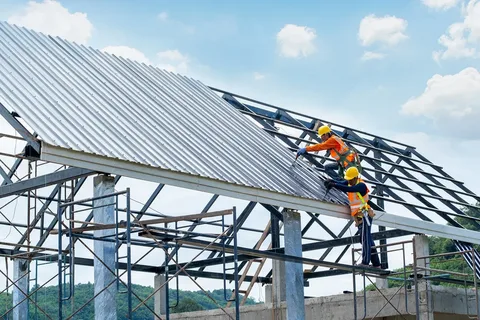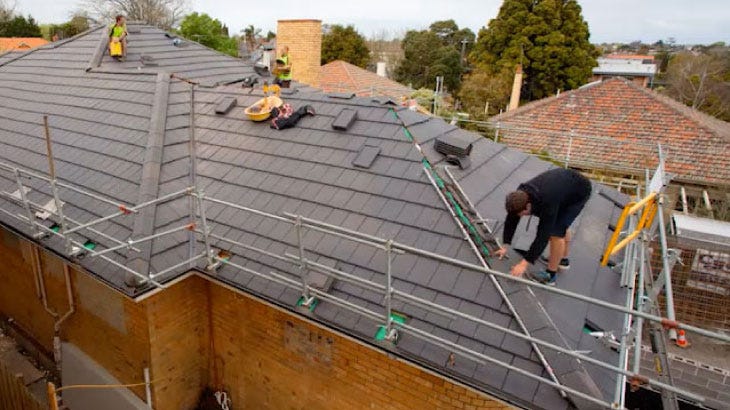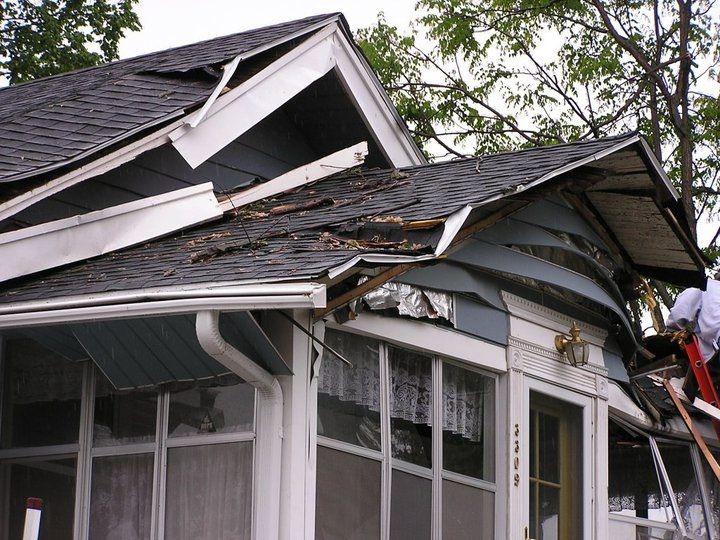Get helpful roofing tips and advice from JC Master Inc. Find out how to keep your roof strong and safe with our trusted roofing services.
Introduction
Spring in New York brings an unpredictable variety of weather conditions that can significantly impact your roof. From heavy rainfall to temperature fluctuations, this transitional season requires homeowners to stay vigilant in maintaining their roofs. With snow melting, increased rainfall, and strong winds, the risk of roof damage is higher than ever. This article explores the specific challenges posed by spring weather and how you can prepare your roof to stay safe and functional.
1. Spring Weather Characteristics in New York
Springtime in New York is a transitional period that brings about unpredictable and sometimes extreme weather changes. Understanding these characteristics can help homeowners make better decisions about roof care.
Variable Temperatures
As winter transitions into spring, the temperature fluctuates drastically. These temperature swings cause expansion and contraction of roofing materials, such as shingles and flashing, which can lead to cracks, gaps, or loosening of the materials.
- Impact on Roofs: These temperature changes put stress on the roof, which could cause minor issues, such as cracked shingles or damaged seals around vents and chimneys, to turn into bigger problems.
Increased Precipitation
April in New York typically sees some of the highest rainfall amounts of the year, averaging around 95 mm of precipitation. This constant exposure to moisture can strain roofing materials that weren’t properly maintained through the winter.
- Effect on Roofs: Leaks become a common problem when roofs haven’t been inspected or maintained properly before the rainy season. Over time, water can infiltrate the roof and damage interior structures.
Strong Winds and Storms
Spring storms often bring high winds that can damage roofing materials, especially on older homes or roofs that have already endured winter conditions. These winds can loosen shingles, blow debris onto roofs, and create potential openings for water to seep through.
2. Specific Risks for Roofs in Spring
Spring introduces several risks for roofing, including but not limited to:
Displaced Shingles
The strong spring winds can loosen or completely remove shingles from the roof. This leaves the roof vulnerable to water infiltration and leaks, which can become costly if not addressed quickly.
Flat Roof Water Pooling
For homes with flat roofs, water pooling becomes a significant issue. Spring rains combined with poor drainage systems can cause water to accumulate on the roof, eventually leading to leaks and structural damage. This problem is particularly problematic for buildings with poorly maintained gutters.
Granule Loss from Asphalt Shingles
Asphalt shingles, commonly used on residential roofs, can suffer from granule loss during the spring. Granules are the protective layer that shields the shingles from UV rays and weather conditions. When these granules wash off due to heavy rain or strong winds, the shingles become more vulnerable to damage and wear.
Damage from Hailstorms
Hail is not a common occurrence, but it can be severe when it does occur. In the spring, hailstorms can cause dents, cracks, and holes in roofing materials, especially in metal and asphalt shingles, which can lead to leaks and long-term damage.
3. Signs of Roof Damage After Winter and Spring
It is essential to inspect your roof at the start of the spring season to catch issues early before they worsen. Here are some signs to watch for:
Water Stains on the Ceiling
Water stains on your ceiling are a clear sign that water is entering your home, possibly due to a roof leak. In spring, leaks may be caused by blocked gutters or displaced shingles. It’s crucial to address these stains quickly to avoid mold or mildew growth.
Missing or Loose Shingles
Check your roof for any loose or missing shingles. These gaps could allow rainwater to seep under the roofing materials, causing internal leaks or structural damage. If you spot any damaged shingles, replacing them immediately is essential to avoid further issues.
Pooling Water on Flat Roofs
Inspect flat roofs for any areas where water is accumulating. Standing water on a flat roof is a significant problem because it can lead to water damage or rot over time. Ensuring proper drainage and removing water after each rain is essential.
4. Preparation and Preventive Maintenance
To avoid costly repairs, it’s important to take proactive steps in the spring to maintain your roof. Here are some practical tips:
Regular Roof Inspections 🔍
Before and after heavy spring storms, it’s essential to have a professional roof inspection. Experts can spot early signs of damage, including loose shingles, deteriorated flashing, and clogged gutters.
- Tip: Schedule a spring inspection to catch potential issues early, ideally before the rainy season hits.
Clean Gutters and Downspouts 🧹
Clogged gutters can lead to water backup, which could cause water to overflow and accumulate on the roof. Cleaning your gutters of leaves, branches, and other debris ensures that water flows freely away from your roof. This simple task can prevent flooding and leaks.
- Tip: Install gutter guards to prevent future debris buildup and reduce the frequency of gutter cleaning.
Replace Damaged Shingles 🔨
If you notice any shingles that are cracked, curled, or missing, replace them before the spring rains begin. A few minor repairs can save you from needing a full roof replacement later. Also, check the flashing around vents and chimneys to ensure they are securely in place and sealed.
Improve Roof Ventilation 🌬️
Proper ventilation helps regulate attic temperatures and prevents excess moisture from accumulating. Condensation in your attic during spring can cause mold and mildew growth. Be sure to inspect your attic ventilation and ensure there are no blockages.
Seal Cracks and Gaps 🧰
Look for any cracks or gaps along the roof’s edges and joints, where rainwater could potentially seep through. Apply roofing sealant to any visible cracks to prevent water from infiltrating your home.
5. Additional Tips for Roof Maintenance in Spring
Invest in Quality Roofing Materials
Consider upgrading to more durable materials such as metal roofing or synthetic shingles that can better withstand spring’s unpredictable weather. Metal roofs are particularly resistant to wind and water damage, making them a strong choice for New York homeowners.
Address Ice Dams from Previous Winter 🧊
If you’ve experienced ice dams during the winter, it’s important to ensure they’re properly addressed. Ice dams can damage shingles and leave long-lasting effects on your roof. Consult a roofing expert for advice on ice dam prevention for the upcoming winter season.
Conclusion
Spring weather in New York can be unpredictable, with strong winds, heavy rains, and fluctuating temperatures. By taking preventive steps and ensuring your roof is well-maintained, you can minimize the risk of damage and avoid costly repairs.
For professional roof inspections, maintenance, or repairs, don’t hesitate to contact JC Master Inc. at (347) 400 2611. We offer flexible financing options to help you prepare your roof for any season. 🌧️


